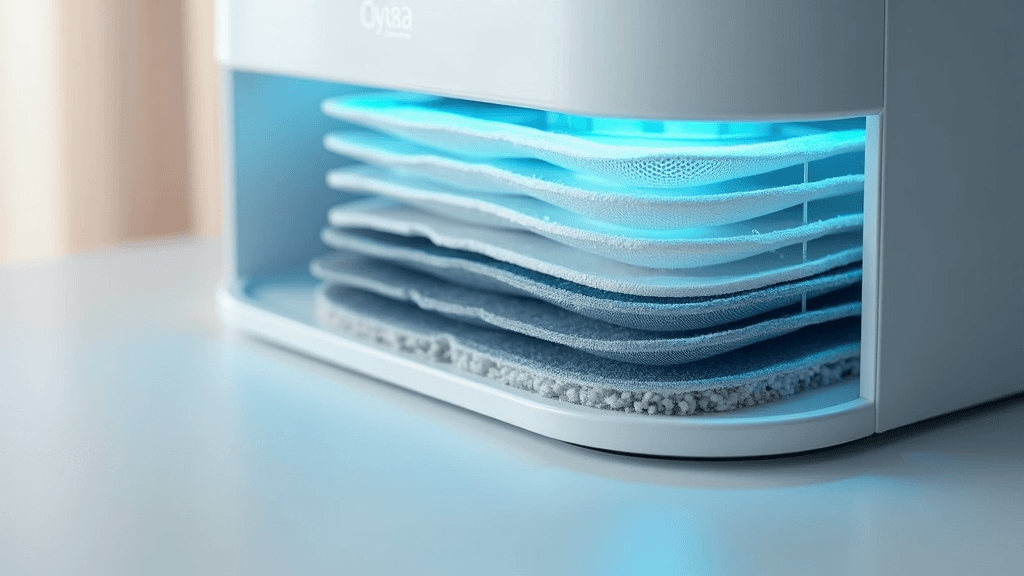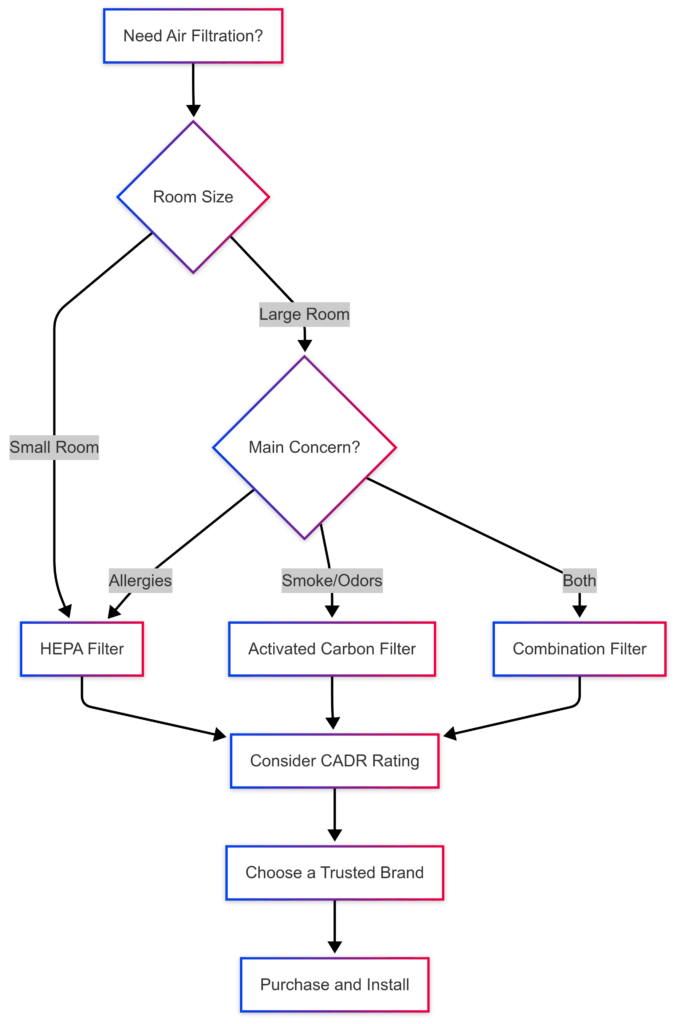Smart air purifiers have become a neat addition to many households. These devices bring modern technology into our homes by automatically monitoring air quality and adjusting their operations to provide cleaner, healthier indoor air. As more people become aware of the benefits of reducing allergens, pollutants, and other contaminants, smart air purifiers continue to gain attention. Still, like any technological device, they come with their own set of challenges. In this article, I dig into five common problems smart air purifiers face and provide some practical solutions to help you get the best out of your device.

Why Smart Air Purifiers Matter in Today’s Homes
Indoor air quality is a topic that has been pushed into the spotlight recently. With more time spent at home, families are looking for ways to ensure a cleaner living environment. Smart air purifiers do this by integrating advanced sensors and connectivity options to not only filter out dust and allergens, but also to monitor overall air quality. This smart approach makes it simpler for users to know when their home air needs extra attention. Technology in these devices often connects with smartphone apps, offering updates and alerts. In this way, homeowners are kept up to date on air quality issues and can even control the unit remotely from anywhere.
These purifiers also work well alongside other smart home devices, allowing them to be part of an interconnected system that helps maintain a safe and comfortable indoor environment. By automating routine tasks like adjusting fan speeds or scheduling filter replacements, smart air purifiers give users peace of mind. Despite these benefits, everyday use can reveal some frustrating quirks and challenges that need addressing for optimum performance and satisfaction.
Getting Started with Smart Air Purifiers
Before settling on a smart air purifier, it’s helpful to understand how they work and what features to look for. Many models offer real-time monitoring through built-in sensors, which detect common indoor pollutants like dust, pollen, and sometimes even volatile organic compounds (VOCs). These devices then adjust their operation based on the detected levels. Connectivity features allow the unit to sync with an app, where you can view air quality metrics or set the purifier to run at specific times. This is especially useful if you want the device to work around your daily routine.
Setting up a smart air purifier typically involves placing it in an optimal location, connecting it to your network, and configuring the settings through its dedicated app. While installation is quite simple for most users, the magic really happens after the device is up and running. The information gathered can help you see a detailed picture of your indoor air, which can be helpful in planning regular maintenance or adjustments to your home’s ventilation.
Common Problems With Smart Air Purifiers
Smart air purifiers offer impressive convenience, but they are not without their imperfections. Several issues come up repeatedly among users and often impact the overall satisfaction with the product. Here’s a list of the five problems I frequently encounter:
- Connectivity Issues: Problems connecting to the home Wi-Fi network can prevent you from accessing real-time data.
- Filter Replacement Confusion: Users sometimes have difficulty understanding when and how to change the filters effectively.
- Faulty Sensor Readings: Inaccurate sensor data can lead to inefficient operation of the unit, either overworking it or leaving harmful particles in the air.
- Excessive Noise Levels: Certain models run louder than expected, especially when the fan is at full speed.
- App and Software Glitches: The companion applications sometimes experience bugs that affect user control and remote monitoring capabilities.
Connectivity Troubles
When your smart air purifier struggles to connect to your home network, it becomes impossible to take full advantage of the device’s capabilities. These connectivity issues can occur for various reasons, like weak Wi-Fi signals in certain areas of your home or problems with the device’s internal software. One easy solution is to reposition your router or the purifier itself so that the signal strength is better. Confirming that your Wi-Fi meets the correct frequency band (usually 2.4 GHz rather than 5 GHz) also helps. If problems continue, checking for firmware updates can sometimes resolve compatibility issues and strengthen the connection.

Filter Replacement Challenges
Smart air purifiers require regular filter changes to maintain their efficiency, but it isn’t always obvious when it’s time to swap out a filter. Some units send notifications via an app, yet these alerts may be confusing or easy to overlook. Understanding the manufacturer’s guidelines for usage can help; many filters are designed to last a specific number of hours or months depending on environmental conditions. I recommend setting a personal reminder as well. Additionally, purchasing quality filters and keeping a stock on hand can prevent delays in replacement and ensure your air purifier continues to work effectively.
Sensor Inaccuracies
Accurate sensor data is critical for the proper functioning of a smart air purifier. In some cases, the sensors might misread air quality levels due to dust buildup or calibration errors. This can result in the purifier either overworking or not running enough during times of high pollutants. Cleaning the sensor after regular intervals and following the manufacturer’s recommended calibration process are good ways to ensure accuracy. If your device consistently reports strange readings, reaching out to customer service might reveal known issues or further troubleshooting procedures you can follow at home.
Noise Disturbances
Noise is another common complaint with smart air purifiers, particularly when the purifier operates at full power. Loud operation can interfere with everyday conversations, work from home, or even a quiet night’s sleep. To manage noise, adjusting the speed settings of the fan can sometimes offer a quieter operation without sacrificing too much air-cleaning power. Most smart air purifiers include an auto mode that optimizes fan speed based on indoor air quality. In some cases, placing the purifier in a room where noise is less of a nuisance or adding sound dampening materials around the device can reduce the overall impact of sound.
App Interface Issues
The software or app that comes with your smart air purifier is meant to give you control and useful insights into your home’s air quality. However, some users find that the app can be buggy or confusing. These issues might include delayed updates, unexpected crashes, or a user interface that is hard to understand. I suggest checking the app store regularly for updates that address these issues. Meanwhile, using troubleshooting guides available on the manufacturer’s website can help clear up some common problems. If persistent, reaching out to the manufacturer’s technical support is a good way to get personalized advice or report recurring issues that might need software patches.
These common issues can seem discouraging at first. However, with a bit of troubleshooting knowledge and routine maintenance, you can significantly improve your smart air purifier’s performance.
Tips and Tricks to Solve Common Problems
If you’ve encountered issues with your smart air purifier, there are a few advanced strategies that might help. Keeping the firmware updated is one of the easiest and most effective ways to prevent software glitches. Regularly check the manufacturer’s website or the app for any updates, as these can provide improved functionality and bug fixes.
Another practical tip is clearing the cache on the purifier’s companion app. Over time, cached data can build up and lead to slower performance or errors. You might find instructions in the app’s settings section to clear the cache. Additionally, performing routine cleaning—especially on sensors and filters—ensures that dust or allergens do not build up, which can cause inaccurate readings or force the motor to work harder than necessary.
For connectivity issues, consider setting up a dedicated hotspot for your smart devices if your home Wi-Fi signal is weak or inconsistent. Some users also report that using a Wi-Fi extender helps improve connectivity between the purifier and the router. Keeping a log of when issues occur can also prove useful, as this information may reveal patterns that you can address with system adjustments. Over time, these proactive habits can extend the life of your device and optimize its efficiency.
Choosing the Right Smart Air Purifier for Your Needs
Selecting the right smart air purifier depends on a variety of factors. The choices available today mean that you should consider the specific needs of your home and the features that matter most to you. Pay close attention to the type of filters used; HEPA filters are often recommended due to their ability to trap small particles effectively. Another factor is the connectivity options provided. A device that syncs properly with your smartphone or smart home system can be highly beneficial.
Energy efficiency, noise levels, and ease of maintenance should also be on your checklist. Reading reviews and comparing product specifications can give you a clearer picture. Some models offer additional features like air quality alerts, real-time reports, and integration with voice assistants. Being well informed about these aspects will help you choose an air purifier that not only cleans the air well but also fits into your lifestyle without becoming a hassle.
- HEPA Filtration: Choose a purifier with a high-efficiency particulate air (HEPA) filter to capture fine particles and allergens.
- Smart Connectivity: Opt for models that easily connect to your smart home system and provide a user-friendly app for real-time monitoring.
- Auto Mode: A smart auto mode adjusts fan speeds based on current air quality, offering an optimal balance between power and energy efficiency.
- Quiet Operation: Consider the noise level. Think about the possibility of using the device in bedrooms or study areas.
Frequently Asked Questions
Here are some common questions regarding smart air purifiers and the issues some users face:
Question: What causes the connectivity problems often seen in smart air purifiers?
Answer: Connectivity issues can be due to a weak Wi-Fi signal or incompatibility with certain network frequencies. Checking your router’s settings and ensuring compatibility with the device can help. Regular firmware updates also give a boost to connectivity performance.
Question: How do I know when it’s time to replace the filter in my smart air purifier?
Answer: Most devices offer an indicator on the app when the filter needs replacing. However, it is wise to read the manufacturer’s guide for usage recommendations, as environmental factors might accelerate filter wear.
Question: Why might my air quality readings be off?
Answer: Sensor inaccuracies can happen when dust accumulates on the sensor or if the sensor requires recalibration. Regular cleaning and occasional calibration resets, as outlined in the manual, often resolve these discrepancies.
Question: Can I reduce the noise my air purifier makes?
Answer: Adjusting the fan speed or using the auto mode might help. If the issue persists, placing the device in a more isolated area or considering a model known for quieter performance can be effective.
Question: Are software glitches common, and how can I address them?
Answer: While not all models experience significant issues, occasional app glitches can occur. Keeping the device and app updated and consulting customer support if problems persist usually leads to solutions.
Wrapping Up
Smart air purifiers can greatly benefit a home by offering a cleaner environment and easing daily tasks through smart technology. While they face some common issues such as connectivity lapses, filter confusion, sensor problems, noisy operation, and app glitches, most of these challenges can be resolved with a bit of routine maintenance and proactive troubleshooting.
Understanding how your device works and performing simple fixes like adjusting settings, cleaning sensors, or updating firmware helps ensure that the air purifier remains both effective and efficient. When choosing a unit, weighing the features that match your lifestyle can make all the difference between a frustrating experience and a smooth, healthy indoor environment.
Finding the right balance may take some effort. With the right knowledge and a few adjustments, you can enjoy the full benefits of smart air purifiers. Every challenge overcome not only improves the device’s performance but also contributes to a healthier living space.

Additional Insights for Long-Term Benefits
For those who are looking to really take up a notch with their home environment, investing a little more time into routine checks and maintenance can add up to significant benefits over the long haul. Consider scheduling a monthly review of your device’s performance metrics as reported on the companion app. This gives you an opportunity to compare readings over time and spot little variations that might indicate something is amiss. Not only does this practice ensure that the air purifier is operating at its best, but it can also help you plan ahead for any parts that might need replacing before an issue arises.
In addition to regular performance checks, it is worthwhile to explore user communities and online forums where other air purifier enthusiasts share their experiences. These platforms are treasure troves of practical advice and creative troubleshooting tips. Engaging in these discussions can provide insight into how to optimize your device’s settings for various seasonal conditions and indoor layouts. Moreover, such interactions often lead to discovering unique hacks or adjustments you might not have considered otherwise.
Adopting a proactive maintenance routine not only safeguards your initial investment but also extends the lifespan of your device significantly. Over time, even small measures—like ensuring proper placement to avoid dead zones in connectivity or changing filters right on schedule—can lead to a consistently clean and comfortable home environment. This next stage of care makes sure that the benefits of modern technology continue to have a positive impact on your everyday life.
With a blend of routine diligence, smart adjustments, and ongoing learning from the experiences of others, your air purifier can consistently deliver a next-level cool performance that makes your indoor environment more inviting and healthy. Keep reviewing your settings, adjusting your maintenance plan, and enjoy the improved air quality that comes with a well-maintained device.

